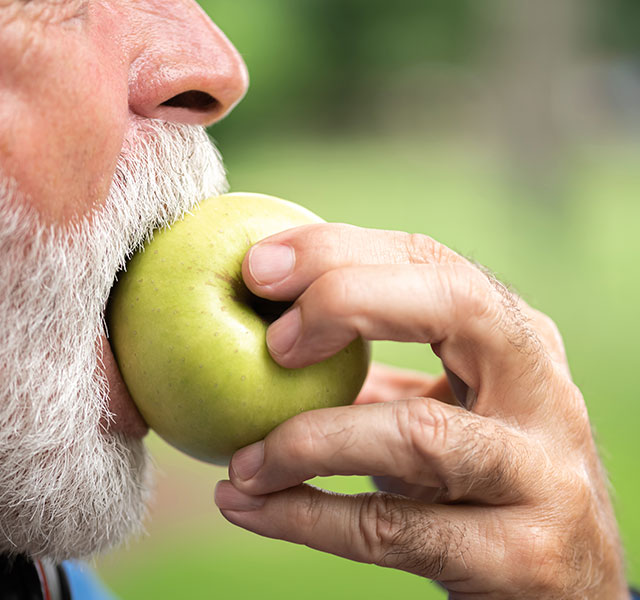In 1801 in West Greenwich, RI, a woman named Christiana Lampher was sold at a pauper auction. As was the custom, she went to the lowest bidder: Ishmael Nichols agreed that for $1 per year, paid by the taxpayers, he would feed, clothe and house her. In exchange, he had the right to put her to work in any way he saw fit. Pauper auctions were common, especially in New England, from colonial times until the middle of the 19th century. This was one way Americans dealt with the poor, including those well along in years.
It’s an old problem: What can people do in later life once they can no longer support themselves? And what help, if any, do taxpayers owe them? These questions have taken on some urgency today, thanks to a recession that has wiped out both jobs and savings for many. A brief excursion through American history sheds some light on how our ancestors coped and highlights pitfalls to avoid.
Family as Fallback
In every era, the well-to-do have been able to relax in their later years, but until about the 1950s everyone else worked for as long as they could. Retirement was rarely possible.
Most Americans turned to family for help once they were forced to stop working. Many states had laws that required citizens to support impoverished relatives, including parents, and 30 states still have such laws today. They’re seldom enforced because in every era most families have willingly taken care of their own.
Yet, there have always been older people with no surviving family or none who could afford to help them, and their options have been few and mostly humiliating. The American public has typically been torn between compassion for the unfortunate and suspicion that people who are poor are simply too lazy to work. Traditionally, widows, orphans and the frail elderly were considered the worthy poor and deserving of help, but some people argued that even the old and helpless had earned their fate because they should have saved their money.
Outdoor Relief
During colonial times, towns and counties took responsibility for the paupers in their midst. Those who couldn’t support themselves applied to the overseer of the poor for help and, in the best-case scenario, received “outdoor relief” in the form of food, fuel and clothing. When people had no home or family, towns sometimes paid neighbors to take them in. Each community supported only its own paupers and turned away strangers.
A second option for the poor was the pauper auction. In New England, it typically took place right after the annual town meeting. The better-off citizens would adjourn to a nearby tavern, where an auctioneer would call out the names of individuals who had applied for public assistance, describe their physical attributes as baldly as if each were a farm animal, and ask for bids. Since the lowest bid won, taxpayers saved money. Widows, children and people who were mentally ill were among the destitute on offer. For instance, in 1830, Rindge, NH, auctioned off Hannah Carlton, said to be “deranged,” at a price described as “a little more than enough to clothe her.”
At the time of our visit the [poorhouse] contained ninety-seven paupers, including some thirty-seven insane people and nine children.
Octave Thanet in 1881
Pauper auctions may sound like slave markets, but they were very different. The individuals put up for auction were required to work for the successful bidder for a specified period, while slaves were the property of their owners for life. If slaves’ health failed in their later years, they were sometimes freed and then abandoned, left to survive if they could. States such as New York passed laws in the late 18th century that made it easy for people to free slaves—except those who were 50 or older. To free them, the master had to post a bond to ensure that they wouldn’t become a burden on taxpayers.
The Poorhouse
Poor people who applied for help could also be sent to the poorhouse. These residences, supported by towns, counties or states, became much more common in the 19th century because many Americans had begun to feel that outdoor relief was too expensive. Those in charge of poorhouses and poor farms made sure conditions were as unpleasant as possible to discourage those who were simply lazy from moving in. Residents able to work were forced to do so.
Writing in the Atlantic Monthly in 1881, Octave Thanet described her visit to a large Illinois poorhouse that she considered typical. “At the time of our visit the house contained ninety-seven paupers, including some thirty-seven insane people and nine children,” Thanet reported. As many as a quarter of the inmates were probably men and women in late life, because that was usual at the time. In the yard, men in shackles—the violent insane—hobbled about among the unshackled poor. The main building had dormitories segregated by sex and crowded with cots. The insane were shut up at night in cells in an outbuilding. Thanet noted that many of the residents had a listless, vacant look, that no medical care was available and that the bathing arrangements were “primitive.”
Today, adults of all ages are anxious about their later years, more afraid of outliving their nest eggs than they are of dying.
Many poorhouses were far worse. In some, inmates were whipped or starved. After scandals erupted and reformers demanded that something be done, the children in the poorhouses were removed to orphanages, the petty criminals to prisons and the mentally ill, including those with dementia, to insane asylums. Historians estimate that mental hospitals eventually housed 70,000 elderlyinmates who had dementia. These changes left poorhouses populated largely by older people.
Benevolent Societies
In a few ways, the poorhouse had an unexpectedly positive effect. Some of the first American hospitals were built to house sick residents on poor farms. In addition, the fear of ending one’s life in the poorhouse was a great motivator. In the 19th century, this led ethnic and religious groups and fraternal organizations such as the Masons to found benevolent societies. Those who qualified (individualshad to be Irish to join the Irish Benevolent Society, for example) could pay monthly dues while they were young and healthy. Later in life or when they were sick or in need, they received food or cash.
Once it became obvious that frail, older members needed a different kind of support, the societies began to build old-age homes. Though much better than poorhouses, they had drawbacks. Some required potential residents to pay an up-front fee and turn over all their assets in return for a guarantee that they would always have a home. Many made residents ask permission to leave the grounds or to have visitors, and most expected them to do chores or work at something like sewing to earn money to support the institution.
The End of the Poorhouse
When the Great Depression struck in the 1930s, it was especially hard on older Americans. Their lifetime savings disappeared, leaving them dependent on adult children who were often jobless themselves. The poorhouse population exploded. In 1940, before Social Security benefits kicked in, two-thirds of older Americans were mired in poverty.
Poorhouses had such a terrible reputation that the lawmakers who designed the Social Security system set out to put them out of business. The part of the new law that provided cash assistance to impoverished older people stipulated that residents of “public institutions” (such as poorhouses) couldn’t receive payments. As a result, poorhouses and poor farms soon disappeared. Many people were still out of work at the time, and a new cottage industry sprang up as families offered room and board to former poorhouse residents and others now eligible for Social Security. Nursing homes also prospered, and many new ones were built.
Security in Later Life
Social Security began to pay benefits in 1940, and it gradually lifted many older Americans out of poverty. It was hugely popular, partly because it was a form of insurance, not just a grudging effort to provide charity. Employees contributed through the payroll tax and felt they had a right to their benefits.
Medical expenses remained a problem since most older people didn’t have health insurance. In 1965, Congress passed Medicare and Medicaid. Together with Social Security, these programs made it much less likely that Americans would be impoverished in their later years and even made it possible for all but the poorest to retire. In 2010, more than one out of four older Americans relied on Social Security for at least 90 percent of their income.
Outliving One’s Nest Egg
Because of the Great Recession, today’s adults of all ages are anxious about their later years, more afraid of outliving their nest eggs than they are of dying, or so they told pollsters from the Allianz Life Insurance Company in 2010. Many have good reason to worry. Experts say the majority of Americans haven’t saved enough to be able to retire as completely and comfortably as previous generations did.
Many people 50 and over vow that they’ll simply go on working. That’s what our ancestors did, but times have changed. We live far longer now and, according to recent research, spend more time in later life chronically ill or disabled. What will become of us once we can’t work? So far, Social Security and Medicare have provided a bulwark against the extreme poverty that made later life miserable for many in the past, but efforts to shrink the deficit could undercut those programs.
In a more prosperous future, most Americans may again find that, with careful planning, they can provide for a happy and productive coda to their working life. If that doesn’t happen, history suggests that many will turn to family for help, reluctantly putting pressure on the younger generation. In this era of smaller, more scattered families, some won’t have relatives available. The good news is that no one is likely to reinvent the poorhouse, but we’ll need to look for other ways to help people survive financially.

Flora Davis has written scores of magazine articles and is the author of five nonfiction books, including the award-winning Moving the Mountain: The Women’s Movement in America Since 1960 (1991, 1999). She currently lives in a retirement community and continues to work as a writer.



